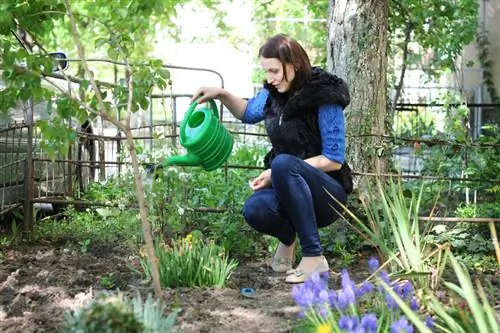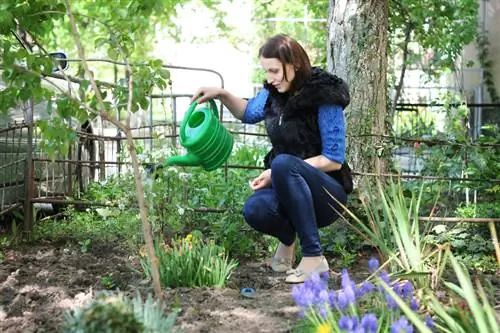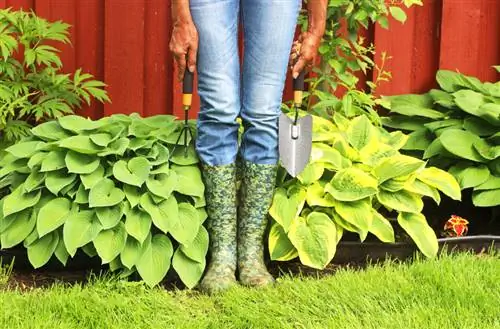- Author admin [email protected].
- Public 2023-12-16 16:46.
- Last modified 2025-01-23 11:20.
There can be different reasons for transplanting irises in the garden. As long as you follow a few rules when transplanting, you can expect good results in propagation and during the subsequent flowering period.

How do I transplant irises correctly?
When transplanting irises, you should carefully dig up the rhizomes, preferably with a digging fork, to avoid root damage. Choose a cloudy day after the flowering period, divide the rhizomes if necessary and replant them in the new, well-prepared location at an appropriate distance. Make sure to water the plants adequately.
Reasons for transplanting
Transplanting irises may be appropriate when:
- wrong location conditions exist
- Soil improvement is only possible by replanting the rhizomes
- the plants should be propagated by rhizome division
If the irises in your garden bloom little or not at all, then you may have originally chosen a less sunny location. In dense stands, it is also difficult to loosen up loamy soil that tends to become waterlogged without completely digging up the rhizomes.
Choosing the right time
Sometimes, after a few years, bare spots surrounded by flower rings appear in the iris bed, which are due to the central root rhizome becoming too old. Wait for the end of the flowering period before digging up all the irises and only reinserting the outer rhizomes with leaves at an appropriate distance. To do this, choose a day that is as cloudy as possible outside of a dry period so that the fine roots on the rhizomes dry out as little as possible. But don't wait too long until autumn, otherwise the plants will no longer be able to grow well in their new location before winter.
The correct procedure when transplanting
If possible, use a digging fork (€139.00 on Amazon) to dig up the rhizomes so as not to damage the roots and leaf bases any more than absolutely necessary. If you only want to transplant the irises for reasons of garden redesign, then it may still make sense to divide the rhizomes a little. This will give you a few years of peace and quiet from the care measures that may be necessary at regular intervals for the irises, which like to multiply. Do not leave the rhizomes unprotected for a long time, but rather put them back in the new location as soon as possible.
Tips & Tricks
Preparing the soil at the irises' new location with deposited compost loosens the subsoil and saves you from having to fertilize these frugal plants in the following years. After planting in the new location, you should water the irises thoroughly with a watering can, even in damp weather. In this way, cavities in the ground are closed by the fine earth that has washed up.






